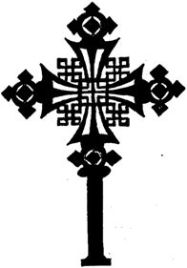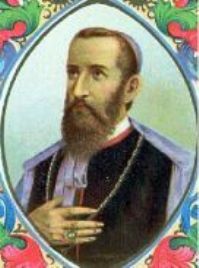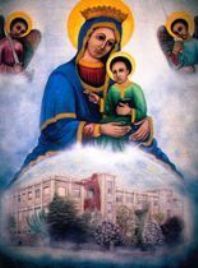Catholic Eparchy of Adigrat
"You will be my witnesses" (Luke 24:48; Act 1:8)

 |
The Eighteenth Century
Abune Tobia Giorgis Gebregziabeher
Historical Perspectives |
Brief Summary of the past The Seventeen Century As an introductory remark it might be worth mentioning that under the direction of Abba Tesfatsion the Vatican published in 1548 a missal of the Ethiopian rite and which was used for the celebration of the Ethiopian Mass. He died in 1550. There was also an Ethiopian Catholic Bishop, John Baptist, consecrated in Rome on 7th February 1565 ( + 1566). In a brief historical summary of the Eparchy of Adigrat it might be appropriate to begin with the departure of the Jesuits some four hundred years ago. At that time it was estimated that there were over 200,000 Ethiopian Catholics. Between 1635 and 1652 the list of those who died for their faith includes the names of one Jesuit bishop, six Jesuit priests, fourteen Ethiopian diocesan priests, two Capuchins and ten Ethiopian laity. Subsequently, the Holy See made repeated attempts to restore relations with Ethiopia's ancient Christianity. In fact, during the seventeenth century nine attempts were made. Fr. James Wemmers, a Flemish Carmelite, is mentioned as having been consecrated the Vicar Apostolic of Ethiopia on 28th December 1644. The bishop received a papal brief which stated that he "knew the Ethiopian language...and by orders of His Holiness (pope Urban VIII) the missionaries have been given instructions not to change the Ethiopian rite...." Shortly after his episcopal consecration, however, Bishop Wemmers died on his way to Ethiopia. Later, an Indian bishop, Mgr. Matteo, a Franciscan Friar, was appointed Vicar Apostolic of Ethiopia on 19th November 1645. Unfortunately, that bishop only got as far as Cairo, where he fell sick and never reached Ethiopia. In 1668 still another bishop was consecrated as Vicar Apostolic of Ethiopia. He was Fr. Antonio d'Andrade. He was descended on his father's side from a Portuguese, who came to Ethiopia with Christopher da Gama in 1541, and from an Ethiopian mother. Once again, this bishop failed to reach Ethiopia as in June 1670 he died of sickness near Jeddah while on his way to Massawa. Among those who died for their faith it is appropriate to mention Frs. Ludovico da Laurenzana and Francesco da Mistretta, who were put to death near Debre Tabor on 28th March 1668. The reasons given in the "Annals of Yohannes I" (1667 - 1682) for their execution is particularly interesting and, indeed, relevant even today. They were convicted, mistakenly, of being Nestorian heretics. Nestorius (381 - 451) had professed that in Christ there were two persons, one divine and the other human. For their part, many Catholics, also mistakenly, considered the Ethiopian Orthodox to be Eutychian heretics. Eutyches (381 - 454) had taught that after the union in Christ of the human and the divine there remained only one nature, the divine. Those who continue to profess this interpretation of the Christ are called Monophysites. But it is both significant and relevant that in this context both the Ethiopian Orthodox Church and the Catholic Church share a common heritage as both Churches condemn Eutyches and Nestorius as heretics. In the celebration of Mass, moreover, both Churches use identical words to express the Christological mystery. For its part the Ethiopian Orthodox Church repudiates being called "Monophysite" and uses the title "pre-Chalcedonian". There is no doubt that an Indian priest, Melchior da Sylva, reached Ethiopia, but as to whether he wrote his letter in 1595 or 1695 opinions are divided. The significance of his letter, however, concerns an identification that he made between the content of the faith and its cultural expression when he wrote: "The (Ethiopian) fasts are not to my liking, for the sole reason that the schesmatics observe them; because I do not want the Catholics to agree with them in anything." In his book "Historia Aethiopica" (Frankfurt, 1681) Hiob Ludolf refuted the argument when he wrote: "Dissonantia jejunii non tollit consonantiam fidei" (Disagreement over fasting does not destroy the harmony of faith). But by implication, however, Fr. Melchior da Sylva had identified the Catholic faith with the Portuguese cultural expression of the faith. Were, then, Catholics to be divorced from their Ethiopian, Christian, cultural inheritance? As a consequence of that unfortunate way of thinking, which, subsequently, was not peculiar to Fr. Melchior, a living challenge was inherited: to be truly Ethiopian and Catholic! ©Copyright by Catholic Eparchy of Adigrat. All Rights Reserved |
